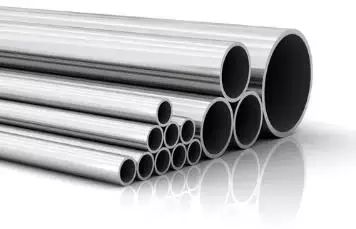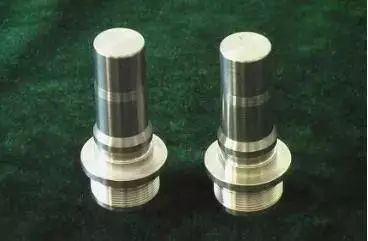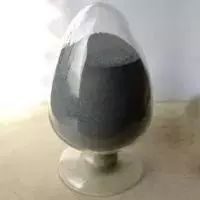

Metal 3D printing is a technology that belongs to digital thermal processing. Currently, the main methods for preparing metal 3D printing include: Selective Laser Melting/Sintering (SLM/SLS), Electron Beam Selective Melting (EBSM), and Laser Engineered Net Shaping (LENS). Compared to traditional processes, metal 3D printing offers advantages such as direct shaping without molds, personalized design, the ability to create complex structures, high efficiency, low consumption, and low cost. However, because it is a form of digital thermal processing, deformation cannot be eliminated, and the amount of deformation needs to be controlled through processes and experience, followed by post-processing with CNC machining and other technologies.

Although 3D printing has only gained popularity in China in recent years, it actually started developing internationally as early as the 1980s. On an international scale, companies such as Argen Corporation in the USA (especially strong in dental metal materials), Carpenter Technology in the USA, Concept Laser in Germany, CPM in the UK, EOS in Germany, Legor Group in Italy, LPW Technology in the UK, Pyrogenesis in the USA (especially skilled in defense), Sandvik in Sweden, SLM Solutions in Germany, etc., provide a range of industry solutions in their respective fields of metal printing. In contrast to abroad, most metal 3D printing materials in China rely on imports, which are expensive, prompting domestic companies and institutions to focus on the independent research and development of metal 3D printing materials.
Metal 3D printing materials have a wide range of applications, including petrochemical engineering, aerospace, automotive manufacturing, injection molding, light metal alloy casting, food processing, medical applications, papermaking, power industry, jewelry, fashion, etc.
However, due to the inherent material properties of metal 3D printing materials, they each have specific application areas. Therefore, the selection process for metal 3D printing materials is a balancing act involving multiple factors. Moreover, the choice of metal for 3D printing cannot solely depend on the parameters of the metal 3D printer; each type of metal material has its own limits based on its characteristics, including application, functionality, stability, durability, aesthetics, and economy, all of which are factors designers must consider.
Currently, the metal powders commonly used in domestic and foreign metal 3D printers include: tool steel, martensitic steel, stainless steel, pure titanium and titanium alloys, aluminum alloys, nickel-based alloys, cobalt-chromium alloys, and copper-based alloys.

Tool Steel
Taking tool steel and martensitic steel as examples, the applicability of tool steel arises from its excellent hardness, wear resistance, and deformation resistance, as well as its ability to maintain cutting edges at high temperatures. H13 hot work tool steel is one such example, capable of withstanding uncertain processing conditions for extended periods; martensitic steel, exemplified by martensitic 300, also known as “martensitic aging” steel, is well-known for its high strength, toughness, and dimensional stability during the aging process. They differ from other steels because they are carbon-free and belong to intermetallic compounds, hardened through metallurgical reactions involving abundant nickel, cobalt, and molybdenum. Due to their high hardness and wear resistance, martensitic 300 is suitable for many mold applications, such as injection molds, light metal alloy casting, stamping, and extrusion, and is also widely used in aerospace, high-strength fuselage components, and racing parts.

Stainless Steel
Unlike carbon steel, stainless steel has a different chromium content, with the lowest chromium content being 10.5%, making stainless steel less prone to rust and corrosion. Currently, there are three main types of stainless steel used in metal 3D printing: Austenitic stainless steel 316L, Martensitic stainless steel 15-5PH, and Martensitic stainless steel 17-4PH.
Austenitic stainless steel 316L has high strength and corrosion resistance and can operate at low temperatures across a wide range; it can be applied in various engineering applications such as aerospace, petrochemical, food processing, and medical fields.
Martensitic stainless steel 15-5PH, also known as martensitic aging (precipitation hardening) stainless steel, has high strength, good toughness, and corrosion resistance, and can be further hardened, being non-ferritic. It is widely used in aerospace, petrochemical, chemical, food processing, papermaking, and metal processing industries.
Martensitic stainless steel 17-4PH maintains high strength and toughness even at temperatures up to 315°C, with exceptional corrosion resistance, and can exhibit excellent ductility under laser processing conditions.
The most widely used metal powder alloys for metal 3D printing materials include pure titanium and titanium alloys, aluminum alloys, nickel-based alloys, cobalt-chromium alloys, and copper-based alloys.
1) Pure Titanium and Titanium Alloys

Titanium Alloys
Currently, the pure titanium available on the market, also known as commercial pure titanium, is divided into Grade 1 and Grade 2 powders, with Grade 2 being stronger than Grade 1, both exhibiting corrosion resistance for most applications. Due to Grade 2 pure titanium’s excellent biocompatibility, it has a wide range of applications in the medical industry.
Titanium is key in the titanium alloy industry. Currently, the titanium alloys used in metal 3D printing are mainly Grade 5 and Grade 23 titanium alloys, which possess excellent strength and toughness, along with corrosion resistance, low density, and biocompatibility, making them ideal for applications in aerospace and automotive manufacturing. Furthermore, due to their high strength, low modulus, and strong fatigue resistance, they are used in producing biomedical implants. Grade 23 titanium alloy has a higher purity, making it a premium grade for dental and medical titanium products.
2) Aluminum Alloys

Aluminum Alloys
Currently, the aluminum alloys used in metal 3D printing include AlSi12 and AlSi10Mg. AlSi12 is a lightweight additive manufacturing metal powder with good thermal performance, suitable for thin-walled parts such as heat exchangers or other automotive components, and can also be applied in aerospace and aviation industry prototypes and production parts. The silicon/magnesium combination enhances the strength and hardness of the aluminum alloy, making it suitable for thin-walled and complex geometric parts, especially where good thermal performance and low weight are required.
3) Nickel-based Alloys

Generally, nickel-based alloys exhibit good tensile strength, fatigue resistance, and thermal fatigue performance. Currently, the main types include Inconel 738, Hastelloy X, Inconel 625, Inconel 713, and Inconel 718.
Inconel 738 has excellent high-temperature creep fracture strength and low chromium content, making it suitable for long-term exposure to corrosive environments at temperatures up to 920-980°C, applicable in aircraft engines and gas turbines.
Hastelloy X exhibits high strength and oxidation resistance at high temperatures and maintains good ductility in environments up to 1200°C. It is primarily used in aerospace technology, such as gas turbine components and combustion zone components, including transition pipes, burner tanks, spray rods, exhaust pipes, and augmentor combustion chambers. Additionally, due to its resistance to stress corrosion cracking, it is used in industrial furnaces, petrochemical, and chemical process industries.
Inconel 625 maintains good load performance even at high temperatures around 815°C and has strong corrosion resistance, widely applied in aerospace, chemical, and power industries.
Inconel 713 exhibits excellent thermal fatigue performance and special fracture strength at 927°C, suitable for jet engine gas turbine blades.
Inconel 718 is an iron-nickel-based superalloy with good corrosion resistance and resistance to heat, tensile, fatigue, and creep, suitable for various high-end applications such as aircraft turbine engines and ground-based turbines.
4) Cobalt-Chromium Alloys

Cobalt-chromium alloys possess high strength, strong corrosion resistance, good biocompatibility, and non-magnetic properties, mainly applied in surgical implants, including alloy artificial joints, knee joints, and hip joints. They are also used in engine components and the fashion and jewelry industries.
5) Copper-Based Alloys

Bronze Powder
The copper-based alloys available on the market, commonly referred to as bronze, exhibit good thermal and electrical conductivity, allowing for design flexibility to create complex internal structures and cooling channels, which are suitable for more effective cooling of tool inserts in molds, such as semiconductor devices, and can also be used in micro heat exchangers, characterized by thin walls and complex shapes.
In China, a highly authoritative 3D printing company in the metal 3D printing field is Xi’an BoLite, which has focused on laser stereolithography manufacturing of high-performance dense metal parts and the laser repair and remanufacturing of metal parts, covering various materials such as titanium alloys, high-temperature alloys, stainless steel, tool steel, and aluminum alloys.
According to Zhou Lingfeng, the regional manager of Xi’an BoLite, the traditional manufacturing industry in China is vast and diverse, while 3D printing, as a cutting-edge technology, cannot be said to disrupt the manufacturing industry; instead, the two complement and promote each other, developing synergistically. Although 3D printing is a technology for freely structured manufacturing, many processing methods are needed to avoid the pain points of post-processing in 3D printing. Therefore, the CNC machining technologies used in traditional manufacturing become particularly important, as they complement 3D printing, allowing different products to change the dominant manufacturing processes when utilizing these two technologies, resulting in more perfect products.
To truly process a nearly perfect metal part, the equipment carrier is indeed important, but it requires coordination among software, processes, and materials. Naturally, when manufacturing parts or processing products with metal 3D printers, one must first be familiar with the materials before discussing precision machinery. Additionally, metal printing can lead to issues with support, which may hinder post-processing of parts, necessitating consideration of more material composition ratios to accommodate the influence of other factors during the printing process on material characteristics. For instance, in 3D printing aerospace components, the metal parts used in aerospace must withstand extreme environments, characterized by strong corrosion resistance, high-temperature tolerance, and high metal strength. If one is not familiar with material characteristics, how can 3D printing control the manufacturing of metal components? Thus, familiarity with materials is particularly important.
Moreover, the cost of metal 3D printing materials is relatively high; on one hand, this is due to the reliance on imports for most metal 3D printing materials in China, and on the other hand, the initial research and development of new metal printing materials requires substantial scientific research funding and human and material resources. However, developing specialized raw materials for metal 3D printing is a necessary factor driving the development of metal 3D printing, and it will also stimulate the growth of new industries.
Summary
Experts see the nuances, while outsiders see the excitement. Regarding the current state of metal 3D printing development in China, there is still a long way to go. Reports indicate that while the USA is pursuing “Internet+”, Germany is pursuing “+Internet”, China is learning from Germany and proposing Industry 4.0. However, we must recognize that Germany has a solid industrial foundation to support this, while China’s manufacturing foundation is still weak, and its research base is not high, which is one of the key factors restricting the development of metal 3D printing materials. Currently, the state proposes “Internet+ manufacturing”, hoping to integrate personal factors, enhance knowledge fluidity, and gradually promote “Internet+ manufacturing”, facilitating the transformation and upgrading of traditional manufacturing and accelerating the rapid development of 3D printing.
Scan the QR code to follow us!
If your WeChat version is 6.1 or above, you can also follow us by long-pressing the QR code~~
